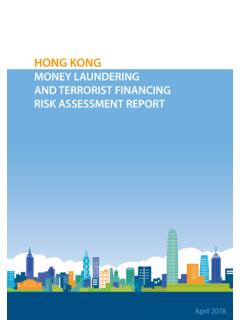Transcription of Basel Committee on Banking Supervision
1 Basel Committee on Banking Supervision Basel III: the net stable funding ratio October 2014 This publication is available on the BIS website ( ). Bank for International Settlements 2014. All rights reserved. Brief excerpts may be reproduced or translated provided the source is stated. ISBN 978-92-9131-964-0 (print) ISBN 978-92-9131-960-2 (online) Contents I. Introduction .. 1 II. Definition and minimum requirements .. 2 A. Definition of available stable funding.
2 3 B. Definition of required stable funding for assets and off-balance sheet exposures .. 6 III. Application issues for the NSFR .. 13 A. Frequency of calculation and reporting .. 13 B. Scope of application .. 13 Basel III: the net stable funding ratio iii I. Introduction 1. This document presents the net stable funding ratio (NSFR), one of the Basel Committee s key reforms to promote a more resilient Banking sector. The NSFR will require banks to maintain a stable funding profile in relation to the composition of their assets and off-balance sheet activities.
3 A sustainable funding structure is intended to reduce the likelihood that disruptions to a bank s regular sources of funding will erode its liquidity position in a way that would increase the risk of its failure and potentially lead to broader systemic stress. The NSFR limits overreliance on short-term wholesale funding, encourages better assessment of funding risk across all on- and off-balance sheet items, and promotes funding stability. This document sets out the NSFR standard and timeline for its implementation.
4 2. Maturity transformation performed by banks is a crucial part of financial intermediation that contributes to efficient resource allocation and credit creation. However, private incentives to limit excessive reliance on unstable funding of core (often illiquid) assets are weak. Just as banks may have private incentives to increase leverage, incentives arise for banks to expand their balance sheets, often very quickly, relying on relatively cheap and abundant short-term wholesale funding. Rapid balance sheet growth can weaken the ability of individual banks to respond to liquidity (and solvency) shocks when they occur, and can have systemic implications when banks fail to internalise the costs associated with large funding gaps.
5 A highly interconnected financial system tends to exacerbate these spillovers. 3. During the early liquidity phase of the financial crisis starting in 2007, many banks despite meeting the existing capital requirements experienced difficulties because they did not prudently manage their liquidity. The crisis drove home the importance of liquidity to the proper functioning of financial markets and the Banking sector. Prior to the crisis, asset markets were buoyant and funding was readily and cheaply available. The rapid reversal in market conditions showed how quickly liquidity can dry up and also how long it can take to come back.
6 The Banking system came under severe stress, which forced central banks to take action in support of both the functioning of money markets and, in some cases, individual institutions. 4. The difficulties experienced by some banks arose from failures to observe the basic principles of liquidity risk management. In response, the Committee in 2008 published Principles for Sound Liquidity Risk Management and Supervision ( Sound Principles ) as the foundation of its liquidity The Sound Principles offer detailed guidance on the risk management and Supervision of funding liquidity risk and should help promote better risk management in this critical area, provided that they are fully implemented by banks and supervisors.
7 The Committee will accordingly continue to monitor the implementation of these fundamental principles by supervisors to ensure that banks in their jurisdictions adhere to them. 5. The Committee has further strengthened its liquidity framework by developing two minimum standards for funding and liquidity. These standards are designed to achieve two separate but complementary objectives. The first is to promote the short-term resilience of a bank s liquidity risk profile by ensuring that it has sufficient high-quality liquid assets (HQLA) to survive a significant stress scenario lasting for 30 days.
8 To that end, the Committee has developed the liquidity coverage ratio (LCR).2 The second objective is to reduce funding risk over a longer time horizon by requiring banks to 1 The Sound Principles are available at 2 See Basel III: The Liquidity Coverage Ratio and liquidity risk monitoring tools, January 2013, Basel III: the net stable funding ratio 1 fund their activities with sufficiently stable sources of funding in order to mitigate the risk of future funding stress. To meet this second objective, the Committee has developed the NSFR.
9 6. In addition to the LCR and NSFR standards, the minimum quantitative standards that banks must comply with, the Committee has developed a set of liquidity risk monitoring tools to measure other dimensions of a bank s liquidity and funding risk profile. These tools promote global consistency in supervising ongoing liquidity and funding risk exposures of banks, and in communicating these exposures to home and host supervisors. Although currently defined in the January 2013 document, Basel III: The Liquidity Coverage Ratio and liquidity risk monitoring tools, these tools are supplementary to both the LCR and the NSFR.
10 In this regard, the contractual maturity mismatch metric, particularly the elements that take into account assets and liabilities with residual maturity of more than one year, should be considered as a valuable monitoring tool to complement the NSFR. 7. In 2010, the Committee agreed to review the development of the NSFR over an observation period. The focus of this review was on addressing any unintended consequences for financial market functioning and the economy, and on improving its design with re spect to several key issues, notably: (i) the impact on retail business activities; (ii) the treatment of short-term matched funding of assets and liabilities; and (iii) analysis of sub-one year buckets for both assets and liabilities.










